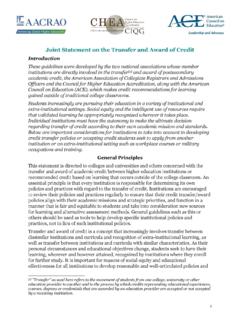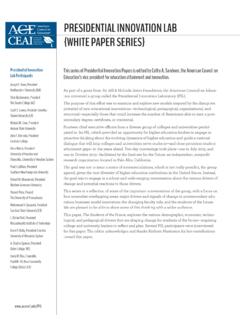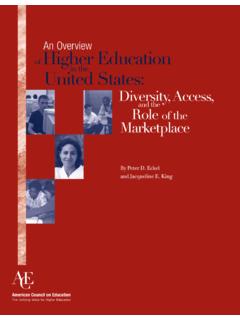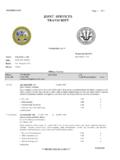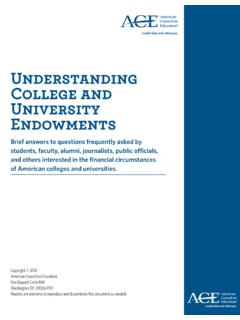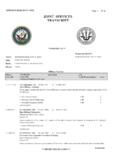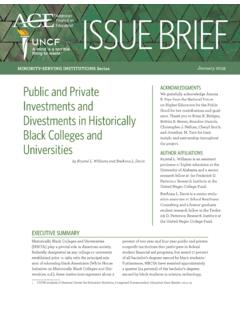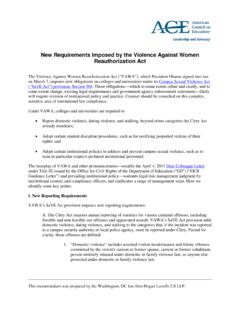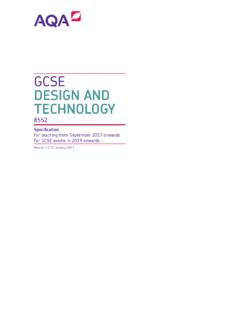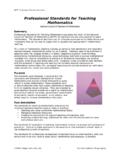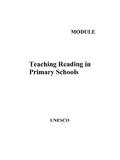Transcription of THE FACULTY DEVELOPMENT CENTER MATRIX
1 A BETA FACULTY DEVELOPMENT CENTER MATRIX Years of Leadership and AdvocacyEdited by: Catherine Haras, California State University, Los Angeles Margery Ginsberg, Independent Scholar and Author Emily Daniell Magruder, California State University, Office of the Chancellor Todd Zakrajsek, University of North Carolina, Chapel Hill High-quality instruction has been the backbone of an American higher education system that remains the envy of the world. But how to measure effective teaching and gauge its impact on an ever more diverse population of students is vital if we are to dramatically increase the number of Americans able to earn a college degree. Molly Corbett Broad, president emerita, American Council on Education- 1 -A BETA FACULTY DEVELOPMENT CENTER MATRIX BACKGROUND AND GOALSThis beta MATRIX derives from historical and recent perspectives on postsecondary FACULTY DEVELOPMENT as considered in a recent publication by the American Coun-cil on Education (ACE).
2 The publication, Institutional Commitment to teaching Excellence: assessing the Impacts and Outcomes of FACULTY DEVELOPMENT , asserts that, although the field is young, FACULTY DEVELOPMENT can and does improve instruction and student learning outcomes. As catalysts for professional learning, teaching centers play a vital role in teaching excellence and cultures of teaching excellence. To support teaching centers in this work, ACE, in consultation with a team of experienced FACULTY developers, created this MATRIX as a tool for the ongoing improve-ment and expansion of efforts. The MATRIX that follows provides an evidence-based template for new and experienced CENTER staff to: Assess the current status of teaching centers and program offerings Communicate and compare professional standards and efforts to improve postsecondary instruction via a stable architecture for CENTER improvement Deliberate current and future goals within and across campuses Contribute to the scholarship of postsecondary FACULTY DEVELOPMENT , student retention, and student learning Deliberate adult learning methods for inclusive and ethical learning environments Prioritize and potentially scale services and practices Advocate for funding and resourcesAll rubric-like matrices are works in progress and present an inherent dilemma.
3 They are by nature reductive and simplistic because they seek to demystify the com-plexity of a task or set of tasks. MATRIX criteria comprise characteristics that researchers and theorists consider to be essential or important and worthy of measuring. While this is by no means a prescriptive tool and is malleable according to the mission and priorities of individual campuses, the rating system and exemplars for criteria can illuminate a teaching CENTER s continuum of quality. This is why the MATRIX we offer is meant to supplement rather than supplant rich, vivid, and powerful descriptions of professional DEVELOPMENT practice. In developing this tool, our guiding principles were grounded in intrinsic motivation theory with four primary considerations: respect for directors multiple com-mitments, relevance to the real work of practitioners, inquiry as a method of CENTER and FACULTY improvement, and authentic evidence of ongoing improvement that can serve multiple purposes.
4 This work is also grounded in transformation theory. This means we sought to develop a tool that could illuminate accomplishment and challenge assumptions about the work and potential of teaching centers. In advance, thank you for participating in this sensitive yet essential future DEVELOPMENT of the MATRIX will be a collaborative effort between the Professional and Organizational DEVELOPMENT (POD) Network and ACE. The beta MATRIX is a nonproprietary and open source tool for FACULTY developers, and other similarlly structured academic units ( , service learning, academic technology, and student DEVELOPMENT offices), to adapt and use as a resource to carry out their work. - 3 -HOW TO USE THE MATRIXR eaders of the MATRIX will benefit from reading the ACE publication Institutional Commitment to teaching Excellence: assessing the Impacts and Outcomes of FACULTY DEVELOPMENT for context prior to using the MATRIX .
5 The MATRIX is organized according to four standards that indicate CENTER DEVELOPMENT as well as institu-tional commitment to the work of FACULTY professional DEVELOPMENT at a campus: 1) Organizational Structure, 2) CENTER Location, 3) Resource Allocation and Infra-structure, and 4) Programs and Services. Each standard has corresponding criteria as follows:1. Organizational Structurea. Institutional placement (hierarchy within the organization)b. Director statusc. Director expertise and preparationd. CENTER mission, vision, and goalse. Institutional memory2. CENTER Location a. CENTER locationb. Space allocationc. Learning spacesd. Web presence3. Resource Allocation and Infrastructurea. CENTER budgetb. Staffingc.
6 Planning and data collectiond. Marketing and reputation4. Programs and Servicesa. Programming scopeb. Program contentc. Reachd. Communities of practiceThese criteria are conceptualized across a possible continuum; for each criterion, a teaching CENTER may be Developing, Partially developed, or Fully developed. To use the MATRIX , scroll through each standard, placing your CENTER at one of the three column stages. For each dimension, circle the cell that most closely approximates the current state of your FACULTY DEVELOPMENT CENTER or efforts. Once completed, you may notice patterns, , certain standards may show strongly, while others need further attention. It is likely that different centers will demonstrate various stages of robustness.
7 All centers continue to develop unique strengths based upon their institutional mission and FACULTY bodies. It is our hope that this template be used to globally assess relative strengths and opportunities, while demonstrating to the institution the value of FACULTY DEVELOPMENT centers, and the need for mindful 4 -ORGANIZATIONAL STRUCTUREThe organizational structure of the teaching and learning CENTER ( CENTER , or CTL), including location in the campus hierarchy and director status, reveals institutional commitment to FACULTY DEVELOPMENT (FD) and teaching . Some of these criteria may be aspirational or currently outside of the scope of the DEVELOPEDFULLY DEVELOPEDINSTITUTIONAL PLACEMENTA formal CENTER and/or an academic leader with responsibility for FACULTY DEVELOPMENT is is one of several FACULTY DEVELOPMENT units on campus with a director and implicit (unwritten) access to central academic administration; director may report to a separate is the foremost FACULTY DEVELOPMENT unit on cam-pus with explicit access to central academic administra-tion and a direct reporting line.
8 DIRECTOR STATUSC enter leadership role is inappropriate for insti-tutional type, , part time in large university; high turnover (average term of service less than three years). Lacks metrics around FACULTY /devel-oper qualifications, experience, and leadership role appropriate for institutional type, , full-time administrative leader who comes from the FACULTY , or generous release time for small college director; low turnover (average term of service greater than three years). Initial metrics around FACULTY /developer qualifications, experience, competencies, and rate of turnover factor into CENTER leadership role fully appropriate for institutional type, , full-time, mid- to high-level administrative leader.
9 Director is consulted in plans involving academic improvement and student success, and included on high-level committees and processes such as accreditation. Well-developed metrics for FACULTY /developer qualifica-tions, experience, competencies, and rate of turnover are in EXPERTISE AND PREPARATIOND irector lacks administrative experience man-aging a CENTER . Director may be recognized for teaching excellence but has no background in disciplines or scholarship that directly impact FACULTY DEVELOPMENT and student learning, ( , adult learning, curriculum design, diversity and inclusion, educational research, instructional improvement, leadership DEVELOPMENT , learning science, technology-enhanced learning, orga-nizational DEVELOPMENT in higher education; postsecondary access and participation).
10 Director has prior experience managing an aca-demic CENTER or program and is recognized for teaching excellence; has some background in dis-ciplines or scholarship that directly impact FACULTY DEVELOPMENT or student learning ( , adult learn-ing, curriculum design, diversity and inclusion, educational research, instructional improvement, leadership DEVELOPMENT , learning science, technology-enhanced learning, organizational DEVELOPMENT in higher education, postsecondary access and participation).Director has extensive experience in higher education administration (or has helped run a CTL) and is recog-nized for teaching excellence. Director has background in disciplines or scholarship that directly impact FACULTY DEVELOPMENT and student learning and continues to receive professional DEVELOPMENT in these areas ( , adult learning, curriculum design, diversity and inclusion, educational research, instructional improvement, leader-ship DEVELOPMENT , learning science, technology-enhanced learning, organizational DEVELOPMENT in higher education; postsecondary access and participation).
